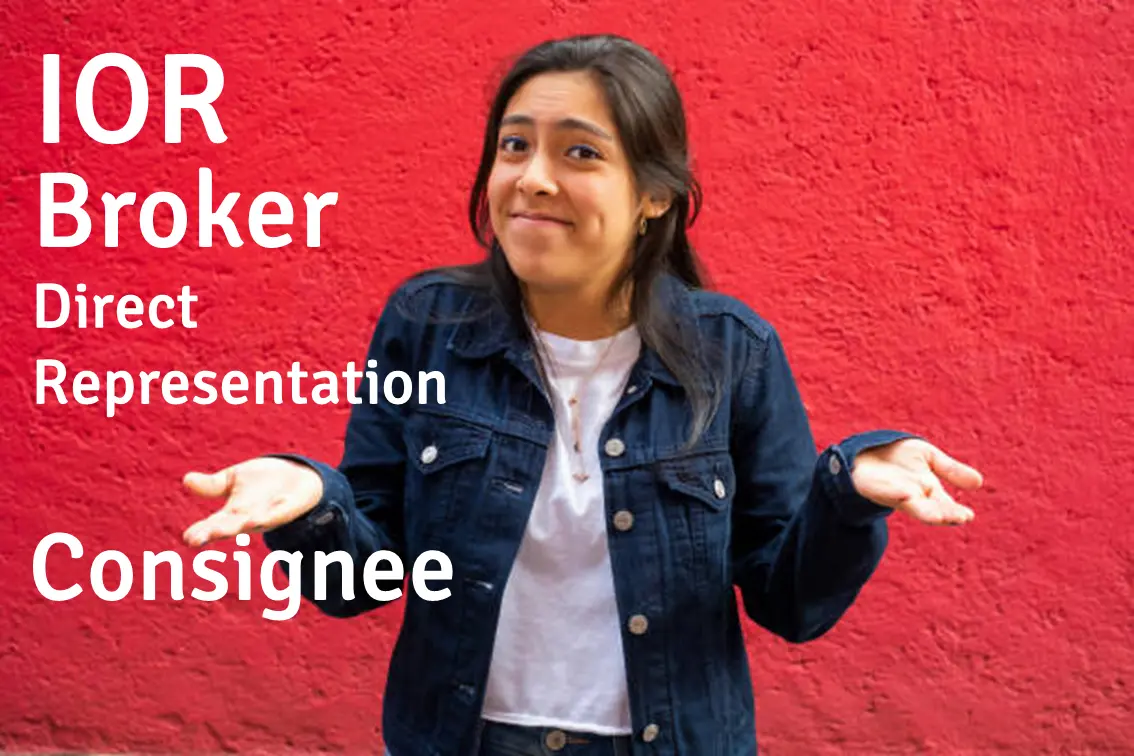Roles of Importer, Broker, and Consignee in US Import Sales: Responsibilities Explained

Understanding the roles of various entities involved in import sales in the United States is essential for anyone engaging in cross-border trade. The importer, customs broker, and consignee each play distinct but interconnected roles, carrying specific responsibilities that ensure the legal and efficient flow of goods into the country. Whether you are a small business dipping your toes into importing or a multinational corporation accustomed to large-scale supply chains, grasping these distinctions is critical to avoiding delays, penalties, and compliance missteps.
When goods are imported into the United States, the sales transaction and logistics involve several key players: the importer, the customs broker, and the consignee. Each serves a unique function within the process, but all share the common goal of ensuring that imported goods lawfully enter the country and reach their final destination. While their responsibilities sometimes overlap, U.S. Customs and Border Protection (CBP) law clearly identifies who holds ultimate legal accountability—and that is almost always the importer of record.
The Importer — Legal Owner of the Customs Compliance Process
The importer, also referred to as the Importer of Record (IOR), is the individual or business entity legally recognized by CBP as the responsible party for bringing foreign goods into the United States. They are the anchor point of the transaction. An importer may be the buyer of goods, a seller shipping directly to US clients, or even a third-party logistics provider acting in certain structured arrangements.
The role is far more than simply purchasing goods overseas; the importer has an extensive set of legal duties:
- Filing accurate entry documentation with CBP, including HS tariff classifications, valuation data, and applicable certificates (such as FDA or USDA permits when required).
- Paying all applicable duties, tariffs, and import taxes such as Merchandise Processing Fees (MPF) or Harbor Maintenance Fees (HMF).
- Ensuring goods meet all US regulatory requirements, which can range from safety compliance (consumer products under CPSC rules) to health and labeling laws (FDA, USDA, EPA).
- Maintaining complete records for five years from the date of entry, as required by CBP regulations.
For example, if a California electronics retailer purchases laptop computers from Shenzhen, the importer of record is the one that must ensure not only that the goods are declared correctly (e.g., tariff code 8471.30.0100) but also that any FCC approvals for wireless devices are in place. If misclassified, CBP can impose penalties that far exceed the cost of the shipment itself.
A common misconception among new importers is that hiring a customs broker “transfers responsibility.” It does not. If the broker files an incorrect tariff code, CBP issues the penalty to the importer, who must then resolve it—possibly seeking compensation from the broker through contractual or legal means, which can be costly.
The Customs Broker — Licensed Intermediary and Compliance Partner
A customs broker is a licensed intermediary authorized by CBP to act on behalf of the importer in customs-related matters. Their core function is to simplify the highly regulated and detail-heavy customs entry process. In practical terms, brokers act as translators of trade rules into action.
The broker’s duties typically include:
- Preparing and transmitting the customs entry paperwork to CBP.
- Classifying products under the Harmonized Tariff Schedule of the United States (HTSUS).
- Calculating and arranging payment for duties and taxes.
- Advising importers on compliance requirements, such as quota restrictions or antidumping/countervailing duties.
- Coordinating with government agencies (FDA, USDA, EPA) for goods under their jurisdiction.
A real-world example: A US-based company imports non-prescription dietary supplements from Canada. The broker ensures that each product meets FDA requirements, verifies labeling per US law, and coordinates any FDA Prior Notice submissions before the shipment crosses the border. This proactive compliance avoids cargo holds and delays.
Direct vs. Indirect Representation
In the US context, the distinction between direct and indirect representation is critical but often under-discussed.
- Direct Representation: The broker acts strictly as an agent for the importer, under a Power of Attorney (POA). Liability for compliance, accuracy of declarations, and duty payment rests entirely with the importer.
- Indirect Representation: The broker may act in their own name on behalf of the importer, potentially sharing certain liabilities. This is rare in US transactions but common in other jurisdictions like the EU.
Importers should always clarify which arrangement applies in their brokerage agreement. For instance, in a direct representation scenario (most common in the US), if a broker mistakenly declares a shipment of stainless steel cutlery under a non-dutiable tariff code, the importer will be the one liable for unpaid duties and possible penalties.
The Consignee — The Receiver of Goods
The consignee is the entity designated to receive the goods upon arrival in the United States. The consignee’s primary duty is operational: to accept delivery, verify accuracy against shipping and purchase documentation, and manage the goods post-arrival.
While often the importer and consignee are the same entity, they can differ—especially in cases of drop shipments, third-party logistics (3PL) arrangements, or supply chains involving distribution networks.
For example, a French wine producer sells directly to a chain of US restaurants. The importer of record may be a specialized US-based wine distributor (handling compliance with alcohol import laws), while the consignee could be a bonded warehouse in New Jersey that stores the wine until distribution to the restaurants.
The consignee generally has no legal responsibility for customs duties or regulatory compliance unless they are also the importer. However, contracts between importers and consignees may impose obligations such as reporting damaged goods within a certain timeframe or storing goods under specific conditions to preserve compliance with US labeling laws.
How the Roles Interact — Scenarios
Scenario 1 — Small Business Furniture Import
A Texas-based interior design firm purchases artisanal furniture from Italy. The firm is the importer—it classifies the goods, pays import duties (9% for certain wooden furniture), and ensures compliance with any Lacey Act wood import documentation.
A customs broker in New York handles the entry filing. The consignee is a local warehouse that receives the shipment for inspection and later delivery to clients. In this setup:
- Importer: Legally liable for customs compliance and duty payment.
- Broker: Files documentation, coordinates with CBP, but bears no compliance liability.
- Consignee: Responsible for operational receipt and inspection.
Scenario 2 — E-Commerce Electronics Retailer
A large online retailer in New York imports gadgets from multiple Asian suppliers. They use different customs brokers at various US ports to speed up clearance. Fulfillment centers act as consignees, receiving and sorting the products for local and interstate delivery.
Here, strict direct representation ensures the retailer owns all compliance liability, while brokers focus on speed and accuracy. Any shipment detained by CBP due to missing FCC certification would still be the importer’s legal responsibility.
Scenario 3 — Third-Party Logistics Provider as Importer
In some cases, a 3PL company may act as the importer of record on behalf of foreign sellers shipping to US customers. In doing so, the 3PL takes on full customs and compliance responsibility, including paying duties. The consignee might still be a separate US business, like a distribution center, but in the CBP’s eyes, the 3PL holds the legal risk.
The Legal Liabilities
CBP enforces a strict principle: the importer of record is ultimately responsible for compliance—full stop. This means:
- Any misclassification or undervaluation is charged to the importer, not the broker.
- Fines can be assessed under 19 U.S.C. 1592 for negligence or fraud.
- Persistent violations may result in denial of importing privileges.
Even operational mistakes, such as failing to provide a required FDA Prior Notice on time, can lead to cargo holds, storage fees, and spoilage for perishable goods.
For brokers, while they may not hold primary liability under CBP law (except in rare cases), their licenses are at risk if they facilitate or fail to prevent repeated violations. This is why brokers tend to have strict internal compliance procedures and may refuse entries they deem non-compliant.
Consignees, though not directly targeted by CBP penalties for entry violations, can face contractual claims from importers if they fail their agreed duties. For example, a consignee that neglects refrigerated storage requirements for imported seafood could be liable for spoilage costs.
Practical Tips for Importers
- Choose experienced brokers familiar with your product category; industry expertise reduces compliance risks.
- Clearly define representation type in your broker contract—direct or indirect.
- Vet consignees for their ability to handle, store, and report accurately on received goods.
- Maintain meticulous records, including all declarations, invoices, and communications with brokers.
- Stay updated on US trade policy changes; tariffs and regulations can shift quickly.
For example, when Section 301 tariffs on Chinese imports were introduced, importers of record had to rapidly adjust their payment structures and consider tariff engineering strategies such as minor product modifications or supply chain shifts.
Conclusion
While the importer, customs broker, and consignee all contribute to the efficient completion of an import transaction, their responsibilities—and especially their legal liabilities—differ significantly. The importer of record bears the ultimate compliance and financial burden, the customs broker acts as a specialized agent facilitating entry procedures, and the consignee ensures the goods are received, inspected, and handled properly after clearance.
Understanding these distinctions, and structuring clear agreements between all parties, is essential for smooth and legally compliant trade operations. The stakes are high: missteps can cost not only money but also import privileges and business reputation.
US importers who seek to ensure their processes are fully compliant with ever-evolving regulations and want expert guidance to navigate complexities can turn to the Trade Duty Refund trade advisory team. We specialize in advising on regulatory requirements, helping you optimize your cross-border sales, reduce risks of penalties, and improve your competitive edge in global trade. Let our experts guide you through compliance challenges so your importing operations run smoothly and successfully.
